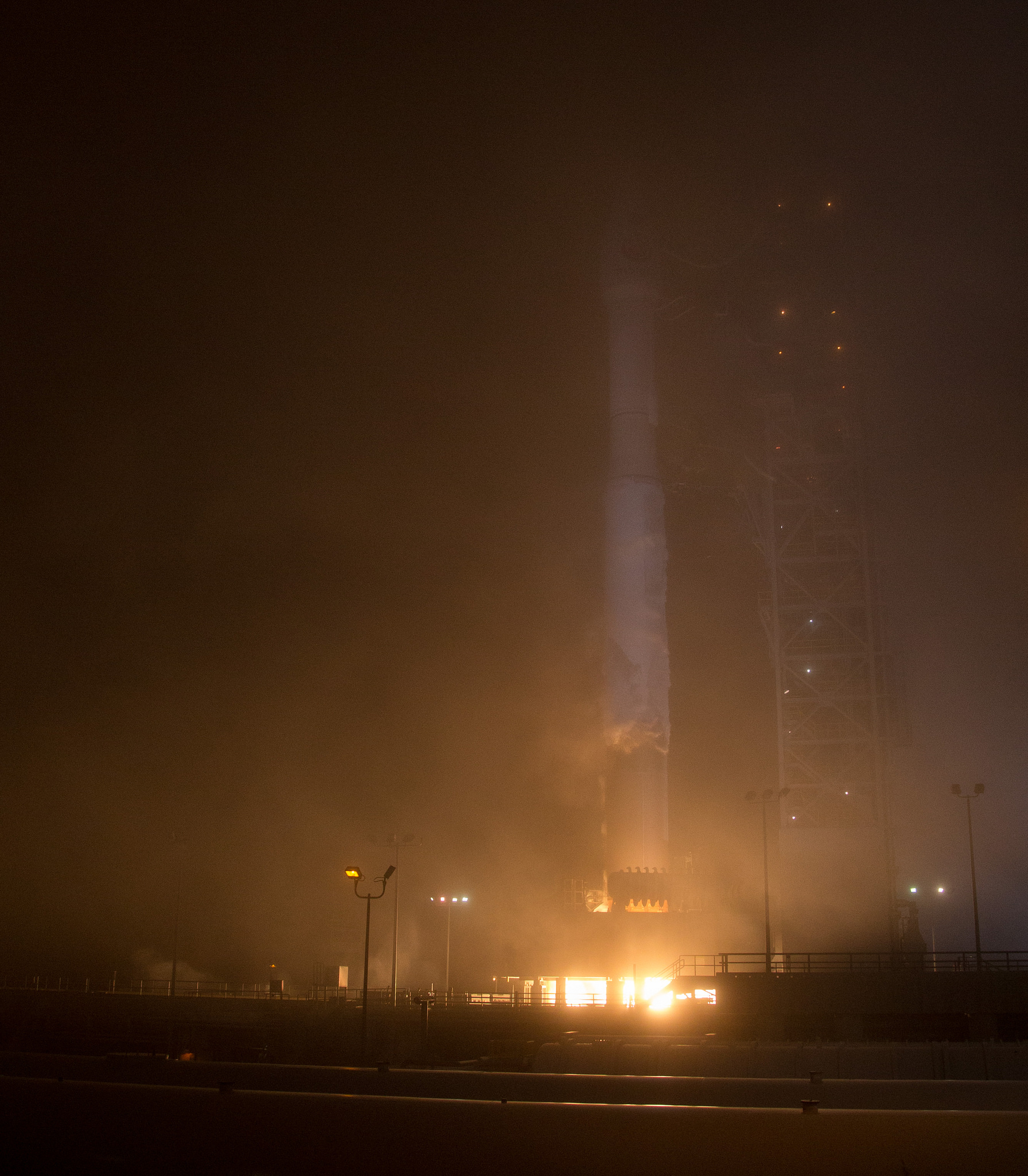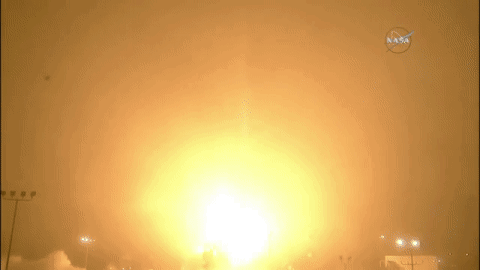NASA’s Mars Interior Exploration using Seismic Investigations, Geodesy and Heat Transport (InSight) mission is on a 300-million-mile trip to Mars to study for the first time what lies deep beneath the surface of the Red Planet. InSight launched at 7:05 a.m. EDT (4:05 am PDT) Saturday from Vandenberg Air Force Base, California.
“The United States continues to lead the way to Mars with this next exciting mission to study the Red Planet’s core and geological processes,” said NASA Administrator Jim Bridenstine. “I want to congratulate all the teams from NASA and our international partners who made this accomplishment possible. As we continue to gain momentum in our work to send astronauts back to the Moon and on to Mars, missions like InSight are going to prove invaluable.”
First reports indicate the United Launch Alliance (ULA) Atlas V rocket that carried InSight into space was seen as far south as Carlsbad, California, and as far east as Oracle, Arizona. One person recorded video of the launch from a private aircraft flying along the California coast.
Riding the Centaur second stage of the rocket, the spacecraft reached orbit 13 minutes and 16 seconds after launch. Seventy-nine minutes later, the Centaur ignited a second time, sending InSight on a trajectory towards the Red Planet. InSight separated from the Centaur about 9 minutes later – 93 minutes after launch – and contacted the spacecraft via NASA’s Deep Space Network at 8:41 a.m. EDT (5:41 PDT).
“The Kennedy Space Center and ULA teams gave us a great ride today and started InSight on our six-and-a-half-month journey to Mars,” said Tom Hoffman, InSight project manager at NASA’s Jet Propulsion Laboratory (JPL) in Pasadena, California. “We’ve received positive indication the InSight spacecraft is in good health and we are all excited to be going to Mars once again to do groundbreaking science.”
With its successful launch, NASA’s InSight team now is focusing on the six-month voyage. During the cruise phase of the mission, engineers will check out the spacecraft’s subsystems and science instruments, making sure its solar arrays and antenna are oriented properly, tracking its trajectory and performing maneuvers to keep it on course.
InSight is scheduled to land on the Red Planet around 3 p.m. EST Nov. 26, where it will conduct science operations until Nov. 24, 2020, which equates to one year and 40 days on Mars, or nearly two Earth years.
“Scientists have been dreaming about doing seismology on Mars for years. In my case, I had that dream 40 years ago as a graduate student, and now that shared dream has been lofted through the clouds and into reality,” said Bruce Banerdt, InSight principal investigator at JPL.
The InSight lander will probe and collect data on marsquakes, heat flow from the planet’s interior and the way the planet wobbles, to help scientists understand what makes Mars tick and the processes that shaped the four rocky planets of our inner solar system.
“InSight will not only teach us about Mars, it will enhance our understanding of formation of other rocky worlds like Earth and the Moon, and thousands of planets around other stars,” said Thomas Zurbuchen, associate administrator for NASA’s Science Mission Directorate at the agency headquarters in Washington. “InSight connects science and technology with a diverse team of JPL-led international and commercial partners.”
Previous missions to Mars investigated the surface history of the Red Planet by examining features like canyons, volcanoes, rocks and soil, but no one has attempted to investigate the planet’s earliest evolution, which can only be found by looking far below the surface.
“InSight will help us unlock the mysteries of Mars in a new way, by not just studying the surface of the planet, but by looking deep inside to help us learn about the earliest building blocks of the planet,” said JPL Director Michael Watkins.
JPL manages InSight for NASA’s Science Mission Directorate. InSight is part of NASA’s Discovery Program, managed by the agency’s Marshall Space Flight Center in Huntsville, Alabama. The InSight spacecraft, including cruise stage and lander, was built and tested by Lockheed Martin Space in Denver. NASA’s Launch Services Program at the agency’s Kennedy Space Center in Florida is responsible for launch service acquisition, integration, analysis, and launch management. United Launch Alliance of Centennial, Colorado, is NASA’s launch service provider.
A number of European partners, including France’s Centre National d’Études Spatiales (CNES) and the German Aerospace Center (DLR), are supporting the InSight mission. CNES provided the Seismic Experiment for Interior Structure (SEIS) instrument, with significant contributions from the Max Planck Institute for Solar System Research (MPS) in Göttingen, Germany. DLR provided the Heat Flow and Physical Properties Package (HP3) instrument.
For more information about InSight, and to follow along on its flight to Mars, visit:
-end-
Dwayne Brown / JoAnna Wendel
Headquarters, Washington
202-358-1726 / 358-1003
dwayne.c.brown@nasa.gov / joanna.r.wendel@nasa.gov
D.C. Agle / Andrew Good
Jet Propulsion Laboratory, Pasadena, Calif.
818-354-5011
agle@jpl.nasa.gov / andrew.c.good@jpl.nasa.gov






























